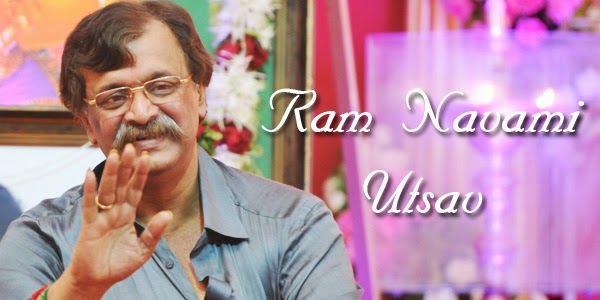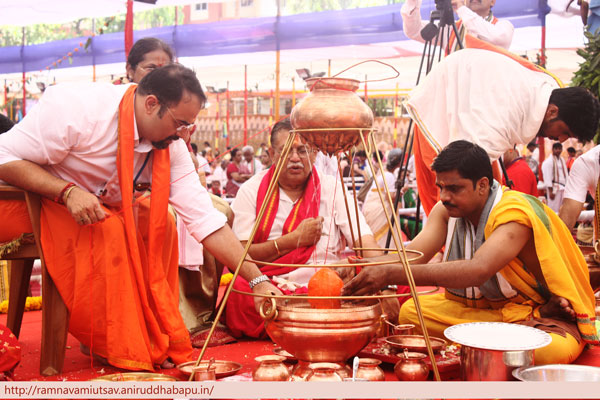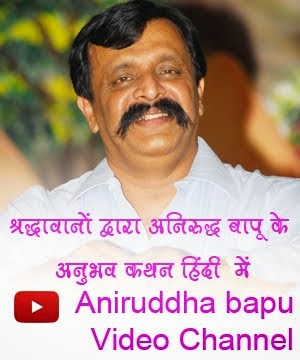What is meaning of RAMRAJYA?
samirsinh dattopadhye
05:40
0
THE REIGN AND KINGDOM OF SHREERAM,
THE SOCIAL ORDER OF AYODHYA
 |
THE REIGN AND KINGDOM OF SHREERAM, THE SOCIAL ORDER OF AYODHYA |
“The Ramrajya means the reign, the kingdom and the general circumstances (the ‘Rajya’) that Shri Ram gave to Ayodhya. Moulding the people on the lines of the subjects of Ayodhya; to make of them, what the citizens of Ayodhya were; creating a society and social order like Ayodhya had, grooming every single individual from this point of view leading to a corresponding response from the human community in its entirety - that is what the Ramrajya means”
“When the subjects (the people of the kingdom) are happy, they are not sad, not miserable, not helpless, not starved or hungry, they are not targets for abuse and contempt, they are not kicked around, the reign or the prevailing state is called the Ramrajya”,
said Sadguru Shree Aniruddha Bapu in His special discourse on 6th May 2010 as he spoke about the Ramrajya, His dream, His aim, His word and His motto, all for His friends’ sakes - our sakes.
And so we understand that the Ramrajya is as much a ‘state of affairs’ at the general level as it is a ‘state of mind’ (mind as in mental capacities, inner resources of a person) at the particular level. This is a destination, a situation we have to attain and so ushering in the Ramrajya calls for committed and consistent effort at both the individual and the collective levels.
The journey to the Ramrajya is also of utmost important as it means approaching the Ramrajya. What should we do while on the journey?
 |
| Ramrajya Book |
Sadguru Shree Aniruddha Bapu guides us, grooms us and prepares us for this beautiful occurrence.
The Ramrajya will be experienced at the following five levels and so necessitates preparation at all the five levels.
1. The personal or the individual level
2. Our near and dear ones who truly love us.
3. The social level.
4. The level of the dharma.
(Aniruddha Bapu defines dharma in His work ‘Satyapravesh’, the first of the three volumes of the Shreemadpurushartha Grantharaj as ‘the principle assumes and helps to preserve humanness in the outer and inner world of man and that is the very basis of intrinsically normal and natural human life’)
(Aniruddha Bapu defines dharma in His work ‘Satyapravesh’, the first of the three volumes of the Shreemadpurushartha Grantharaj as ‘the principle assumes and helps to preserve humanness in the outer and inner world of man and that is the very basis of intrinsically normal and natural human life’)
5. At the level of Bharatvarsha and the establishment of the Ramrajya at the universal level.
Bapu announced the following projects that ensure growth and preparation to usher in the Ramrajya or rather to arrive at this state.
- Aniruddha’s Institute of Language and Linguistics
- Aniruddha’s Institute of Grameen Vikas
- The Exponent group of Journals for MBAs
- The Exponent group of Journals for professional medicine
- The Exponent group of Journals for general medical information
- The Exponent group of Journals for chartered accountants
- The Exponent group of Journals for teachers
- The Exponent group of Journals for shares and stock market
- The Exponent group of Journals for general engineering
- The Exponent group of Journals for information technology
- The Exponent group of Journals for Electronics
- Aniruddha’s Institute of alternative energy resources
- Aniruddha’s Laboratory for Pollution control and environmental protection
- Aniruddha’s Institute of Sports & Bonsai Sports.
The Shree Rana-chandika Prapatti for men and the Shree Mangal-Chandika Prapatti for women (Prapatti is surrender that relieves of disaster or calamity), that will strengthen them and make of them both, soldiers at the worldly and the spiritual plane.and The Chandika Exaltation Army for Resuscitation and Rehabilitation with its basic mission of the rejuvenation of the unique strengths of the excellent Indian culture and of their impacts and of course regaining for them their due glorious status
 |
| Chandikamata at Shree Gurukshetram Khar |
To sum up simply, at the personal level, offering 24 minutes out of 24 hours to God, the Chandika upasana – the prapatti once a year apart from the regular recitation of the Gurukshetram mantra apart from the simple and easy changes in our daily lives will assure us of the citizenship of the Ramrajya, it will make us legitimately entitles to the entry permit so to say of this terrain.
“With firm belief and love in your heart, hold on to the faith that I am your well-wisher, a well-wisher who strives and toils for your well being and without the slightest expectation from you….” says the One who is going to take us along, to this wonderful state, ‘a world that He will fill with happiness and abound with joy all that be in it’, a reality that He dreamed for us and the Truth that He will realize for us.
Yes, the Ramrajya will happen, 108%
Original Source of Article Sadguru Aniruddha Bapu Discourse on Ramrajya (Marathi)


















